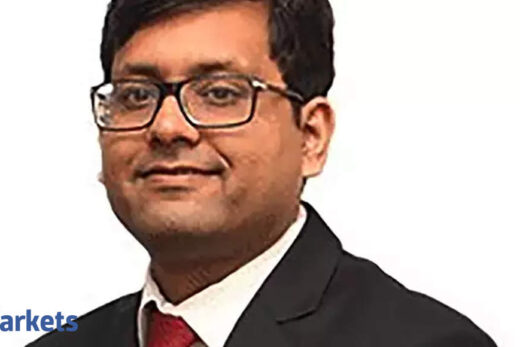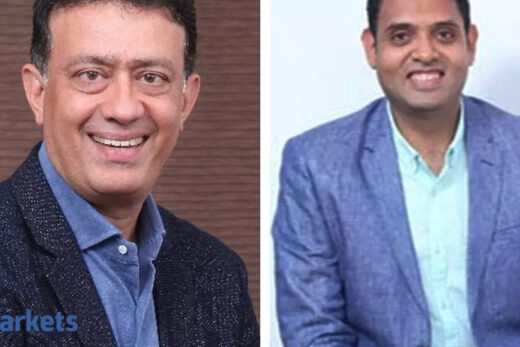In nine months, we have perhaps seen all shades of market behaviour – meltdown, fear, excitement, FOMO and now a touch of euphoria!
Correct, that is how life has become. Anyway everything has become compressed in recent years and this is one part playing out. But in the end it all depends on from where you will start your counting to say whether this market has done well or not. If you say that the market is up 50-60% or 70%, then it looks very scary. But what is the return for a year and for two years and for three years? They are reasonable and stable enough in that sense of being broadly up 12-14% per annum to feel that the market has legs to go.
We have large scale retail participation and excitement in the IPO market. Aren’t they tell-tell signs of danger?
The IPO sizes have been smaller and these days IPOs come to the market a bit late as relative to the olden days when many completely new or nearly now companies would come and therefore they would have less of history. Now they are mostly either private equity funded and for whatever reason, they come to the market in a slightly more mature state. So they are not as big punts.
But the main thing is that at least in India, the companies that raise a lot of money have basically been smaller companies and so that the size of the IPO is usually Rs 500-700 crore and therefore they are hyped up a little bit and then they fall. It does not change returns of portfolios in that sense.
In terms of retail participation, it is that true that people who were walking out, have come back and we attribute all of this to the Covid lockdown effect and people getting in, not knowing what to do and investing in the market. But again, this is a global phenomena. It is very amazing that the whole world thought in the same way, reacted in the same way and it is amazing how these things happen and where nobody plans when things happen like that. But that part is not making me feel that this is the end.
What is making me feel that some stocks are overdoing it is that if I look at the performance of many stocks on a year-to-date basis, and I look at what the prices in December 2019, then there should be some logic for them to go up 40-50%. For some of them, the logic can be that they are Covid beneficiaries and that they are beneficiaries of an accelerating trend going somewhere. But for some others we know that the actual performance will be very badly down for this year and then quite badly down for next year relative to what we may have thought on January 20. Those stocks are up 40-50% and these are the ones which are easier to avoid.
Would money be made by going long or short in 2021?
For us, it has always been more of long. Our longs are at least three times that of shorts, mostly 90-100 longs and 30-40 shorts. The idea in that model is that in a bad market, you save a lot of money and in a good market you may underperform but over time, it helps in outperformance.
This year has been very good for us relative to a long only fund. We would have beaten them by 6-7% which is good. But there are two reasons to have this strategy. One is that in the really bad months come like March of this year when the market was down 25% and if you are down say 15% or 12%, it is a massive buffer which helps you over the next six months. Whatever may happen to the market, if you save 10-12% in a bad month, it helps.
The second reason is psychological. One is willing to go into the market more or less at any stage and say that it does not matter, if the world falls apart and we will fall apart a little less and that helps the investors and for us to hold on to positions because we say not to worry, we have some hedges on the other side.
But over time, money has always been made in cumulative sense on the long side because over time the markets go up and the idea of this shorting as insurance has worked in our case because the cost of insurance has been near zero in the last 15 years. The market has gone up may be eight-nine times in rupee terms and we have not lost even one rupee cumulatively over this period but it does not mean we have made massive money on shorting.
Tell us a little bit more about your new PMS.
The PMS is basically to reflect the long side of our long-short fund. It will be managed by Helios India. Broadly the themes remain the same. The three themes which have made us more money are private sector banks, consumer and tech & pharma. Being flexible enough to take 15-20% in five-six names in new themes for that two-three year window. We are not saying that every theme, every stock in these names can give 20% for 10 years. There are so many things. In the last one year, these have been related to PLI schemes or companies going online or some rural themes. But they are perfectly aligned to today’s environment.
What is the primary strategy or theme we are going to enter the new year with? What would be the predominant theme in 2021?
The best qualification of a fund manager if it could come out like that is that you have no real idea or you are wrong on what the theme might be and still you do well. For example, let us look at 2016 December. I was hugely negative on demonetisation and we have been right on the economy part and the pain part but from a stock market point of view, we could not had been more wrong. At that time, we had reduced our net exposure in the long-short fund to 25% or so. 2017 turned out to be one of the biggest years where the market was up some 38%, our long-short fund was up 52% because the market was benefiting from huge flows into mutual funds.
So most of the time we do not change our main three themes. Those three themes are : a)we like companies competing with government which these days means private sector banks; b)we like consumer and consumption because those are the themes that have worked globally and are working even now after whatever number of years they might be ahead of us; c), for the last 10-20 years, globally it has been technology and for us, it is IT — which is poor man’s technology — and some pharma and little bit more whatever some speciality chemicals for the last few years.
You can’t start every year thinking I am going to buy this and I am going to buy that. If at all that has to be done, you do that with these additional 5-6 stocks — 2-2.5% each where you can be diversified. It could be rural play next year, it could be continuation of people going online, PLI schemes or some new things that will come up which you are not doing today. You cannot start a new calendar year wiping out everything old and start from zero.
If we look at the Fortune Forbes billionaires list, if we look at the biggest companies in the US, the most successful companies in the last 15-20 years have come from three-four themes. They come from financials, consumers and technology. Rest you rent for a year or two. Some of them may qualify to be held for longer but they are not things that make most of your money. Most of the money is made from the backbone of the fund, which are the same old themes every year and for 25 years they worked for me at least.
There have been certain pockets of consumption where we ate already starting to see signs of a strong rebound. What is exciting you?
In the last one year, people have not spent money on services, they have not gone out, they have not gone travelling, they have not gone to hotels and they have been mostly forced to stay at home. They have either chosen that they want change things in the house or they want to change the house itself because they feel that it is better to live life one time. Whatever be the reason, it has been a global phenomenon. In Singapore, in the US and in India, real estate has picked up, particularly residential demand has gone up.
We do not have a pure real estate company but we have housing finance companies where one spends money upgrading the house and buying consumer durables, refrigerators, bigger TVs. This theme is currently attractive to us except that we have not just bought a pure real estate company.
Where do you stand when it comes to platform companies or specialty chemicals which have been big wealth generators?
We include speciality chemicals along with tech, pharma as cost advantage factors which means basically there is India wide advantage. That is part of our theme. We are 6-7% in speciality chemicals. Platform companies are loosely defined because people generally like to use the platforms because it makes people feel this could be the next Google or Amazon. We own one or two companies but a platform company basically means that the company is only providing the platform and buyers and sellers meet on their own and go away on their own. When you need a large sales force, when you need to go and actively sell, you may call it a platform company up to a point and we have one of these IT companies or whatever tech companies taking people online in the MSE sector and the smaller customers and smaller buyers and sellers.
Calling it platform company is a big name for a small company but there are no platform companies in India. Platform companies mean buyers and sellers meet on their own like in a Google or in a Facebook and stuff like that.
I was referring to IndiaMart, I do not know whether that is the one stock that you are talking about?
We have it and we have it for some time. Okay, so that is one company. I do not think we have a second platform company in India as far as I am concerned.
UltraTech, Hindalco, the Adani Group have announced capexes. Should markets start looking at very inward looking stories — be it is steel or cement, engineering or industrials?
They could but we would not. The way to look at it is to be able to hold on to stocks in bad times. To do that, you must have a starting conviction which is beyond some big picture line that China is growing and Australia is exporting there and Brazil has some problems. For me, it is difficult to become convinced about these very big picture top line, headline macro type issues.
Some people who do macro investing may become convinced on these things. So for us it does not work. We will mostly come in when it is too late and we will panic at the first negative news on these things.
For example, we do not even like the auto sector. Some people will say this company has grown 25% and some other 30%. That may be true but it also depends on what stock we bought during that time and maybe that went up 30% or a little less or little more.
We do not have to compare everything to zero and say oh my God if I do not buy this stock, this will go up 25% because we know that if that stock has to go up 25% there will be 50 other stocks that have to go up plus, minus the same and we would rather buy something where we feel that the longer term prospects are not being disrupted that there is something that we believe in. So we will never buy these Hindalcos and cement companies because we have never done it and we seem to have done well so we are happy with our own convictions.



